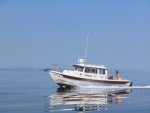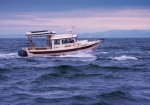I’m a proud new owner of a C-Dory 22 with twin Honda 50. When hook up to my truck ( full size 3/4 T), the engines seem to have an ok amount of ground clearance but not as much as I’m use too. I had a couple trailerable sailboat that had a couple feet of clearance so I never worried about hiring ground with kicker. Ideally I would like to keep engines down as to not put undue stress on the transom but also don’t want to do any other damage. So, all that said, I would like to hear form others how they set their engine while on the road.
Thanks for any input.
I’m sure this as been discuss here but could not find any tread, If someone can send link to those I would appreciate it.
Thanks for any input.
I’m sure this as been discuss here but could not find any tread, If someone can send link to those I would appreciate it.


